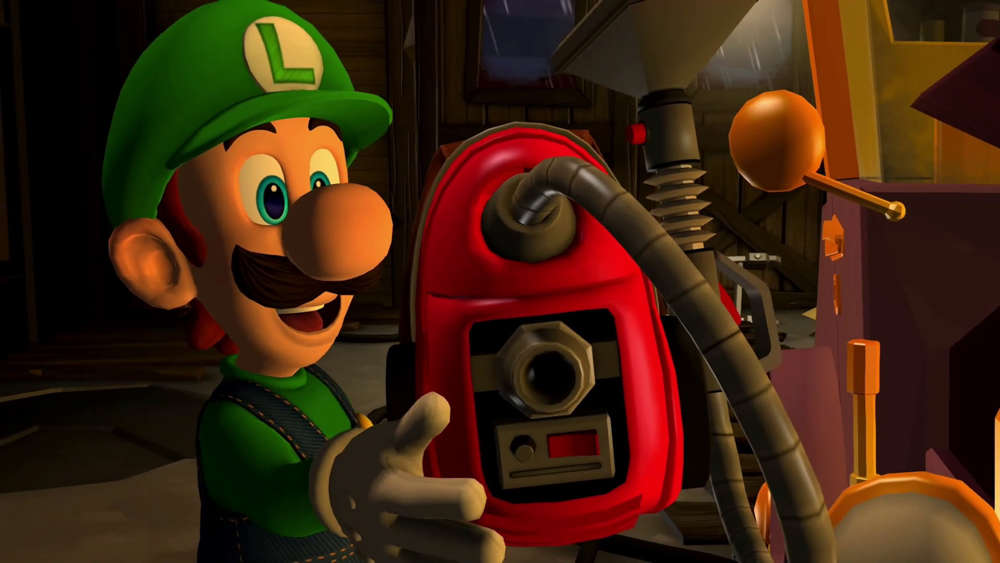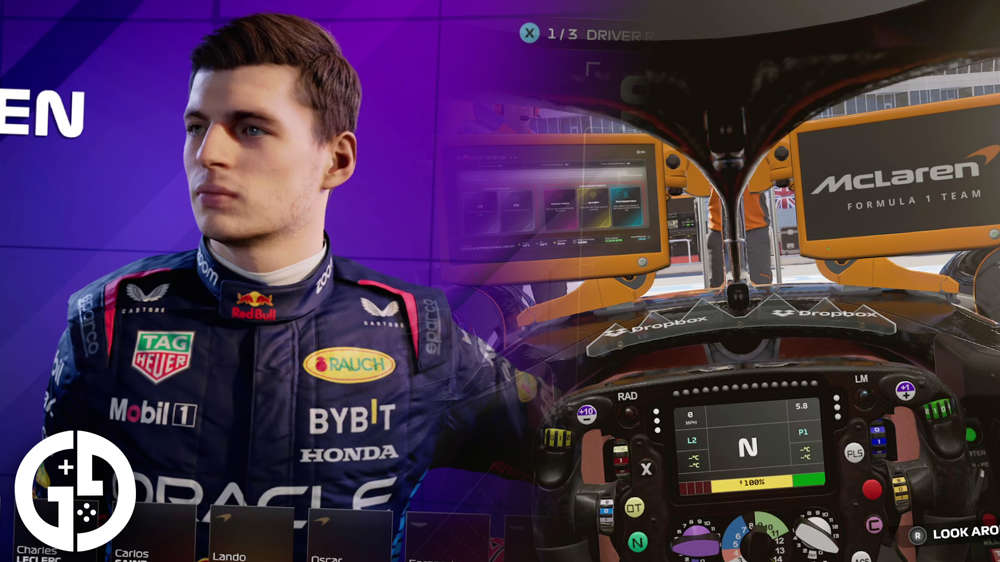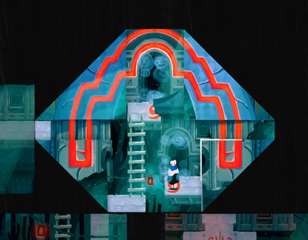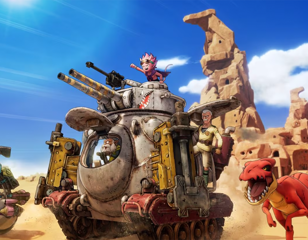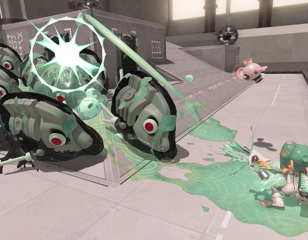Tales of Kenzera: ZAU review - A captivating parable of love, loss and grief
Surgent Studios has delivered its debut game, Tales of Kenzera: ZAU, which deals with themes of love, loss, and grief. Find out how we enjoyed the game in GGRecon's review.

Tales of Kenzera: ZAU is a triumph for Surgent Studios. The team has clearly thought long and hard about how to best depict this tale of grief and has presented it in a way that perfectly parses how it feels to come to terms with the loss of a loved one.
Minor gripes with the linearity of its world can be forgiven when the gameplay that backs up the narrative is so enthralling. While I doubt I’ll go back for the collectables, the lessons that Tales of Kenzera: ZAU has to teach will stay with me long after I put down the controller.
Images via EA
Platform(s)
PC, PS5, Xbox Series X|S
Released
23/04/2024
Developer
Surgent Studios
Publisher
EA
Creative lead and voice actor of the protagonist in Tales of Kenzera: ZAU, Abubakar Salim, has spoken at length about how the story of this game’s development is an allegory for his own personal grief. Following the passing of his father 10 years ago, with five of those spent coming to terms with his thoughts, he decided to form Surgent Studios and create a game that navigates not just grief, but how it’s expressed in his own culture.
Releasing onto PlayStation Plus in April 2024, Tales of Kenzerra is a fantastic exploration of all the themes it sets out to examine. With a captivating story, rock-solid Metroidvania gameplay, and enough heart and soul to make you weep, Tales of Kenzera is the triumphant culmination of Salim and Surgent’s work.
GGRecon Verdict
Tales of Kenzera: ZAU is a triumph for Surgent Studios. The team has clearly thought long and hard about how to best depict this tale of grief and has presented it in a way that perfectly parses how it feels to come to terms with the loss of a loved one.
Minor gripes with the linearity of its world can be forgiven when the gameplay that backs up the narrative is so enthralling. While I doubt I’ll go back for the collectables, the lessons that Tales of Kenzera: ZAU has to teach will stay with me long after I put down the controller.
Metroidvania match made in heaven
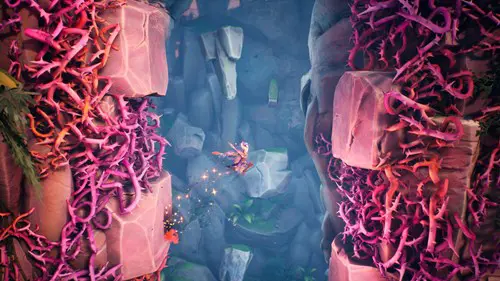
As Zau’s story begins, his situation mirrors that of Salim’s. He has lost his father and sets out on a quest to bargain with the Bantu god of death, Kalunga. What ensues is a story that branches out in different directions as Zau explores tales and meets key figures from Bantu fables, each teaching him a valuable lesson along the way.
Each of these characters is fleshed out remarkably, with their stories laid out clearly from the beginning of each branching path, before culminating in a final boss fight where Zau must overcome a final challenge. As such, there are no real side quests in Tales of Kenzera, making the experience tightly-knit, with everything feeling purposeful.
What’s sublime about the narrative of Kenzera is that its development is linked intrinsically with Zau’s progression, and by extension the player’s progression. As Zau learns new lessons, he learns new powers, which push the story further as new pathways are opened to him.
As Salim mentioned on IGN’s Beyond! Podcast, the choice to develop Tales of Kenzera as a Metroidvania was an intentional one. “[It’s] the perfect genre to depict grief. You’re thrown into the middle of something you’ve no idea about and you’ve got to work it out as you go along.” This is a super thoughtful element of Kenzera’s design, and once you think about the game in that sense, it elevates your appreciation for Sugent’s craft all the more.
By the end of Zau’s story, I found myself coming to terms with my own experiences of grief. It’s very rare that I find myself making deep connections with a video game’s narrative, but the lessons that Zau has to teach struck a chord with me, and likely will with many other players out there too.
Run, Shaman, Run

While Tales of Kenzera might sound like it has a bleak subject matter, its presentation couldn’t be further from that. The visuals on display here are nothing short of stunning, with almost fluorescent colours and light beaming from the screen at every corner.
Each new biome feels distinctly different from the last, making you feel like you’re exploring much farther into the world of Kenzera than you actually are. Although the game is played in 2D, the environments extend way beyond the horizon, and I often found myself pausing to take in the sights on offer.
Movement around Kenzera is a highlight, with a double jump and dash given to you from the off. More movement abilities are added as time goes by, and before you know it you’re chaining them together as you dart through the world at a break-neck pace. That eventually culminates nicely in a chase scene, which feels very much inspired by a similar scenario in Ori and the Blind Forest, and might even surpass it with regards to how tense it had me feeling.
The platforming is tuned to a tee. I never encountered a situation where I wasn’t sure how to proceed - only that I lacked the required dexterity to execute it. After a few practice runs, I was always able to overcome obstacles in my way. That said, it would have been nice to see an accessibility feature that soothes that instant death penalty for hitting some environmental hazards for us more clumsy players.
If there’s one minor criticism I’d levy at the level design it’s that, while still a Metroidvania, it does feel remarkably linear. Each story act branches out from a central point, with very little need to backtrack to old locations. A basic fast travel system is implemented to make the process simple should you choose to do so, but you’d only really want to do that if you’re up for hunting down all the collectables, of which there are a few.
I would have also liked to have seen a little more creativity in how those secrets were hidden. This is likely because I’ve been playing way too much Hollow Knight recently, but there were plenty of times when I found myself jumping into funky crevices of the level thinking there’d be a secret reward, only to be sadly disappointed.
Don’t mess with the masks

The narrative and traversal mechanics are front and centre in Tales of Kenzera, but there’s a delightful combat system to back it up, too. While it can appear barebones at the start of Zau’s journey, additional facets of the combat system regularly open up as the protagonist becomes more at one with his emotions. Again, the narrative and gameplay converge beautifully here, with Zau able to expand his health pool by meditating at specific hidden locations.
Combat is split between two masks that Zau wears, signifying both the Sun and the Moon. Sun attacks are heavy-hitting, but are meant for close-quarters encounters. Meanwhile, Moon attacks shoot out icy blasts that deal less damage, but can take out enemies from afar.
You’ll need to switch between the masks regularly to complete combat encounters, especially in the late game when enemies begin to hold colour-coordinated shields. Switching between the two masks is an enjoyable dance that needs to be orchestrated carefully, especially on higher difficulties. Once you get into the rhythm of it, just like the traversal abilities, you end up entering a state of flow, adapting your gameplay strategy as the enemies unleash themselves upon you.
Speaking of enemies, there’s some decent variety on offer. While many do repeat, they never become tiresome over the roughly seven-hour runtime. There are some truly creative bosses, too, including a favourite of mine which is designed so that you constantly need to move around the 2D stage to avoid defeat.
A skill upgrade system keeps things paced nicely, with ability augments unlocking in a decent flow as you defeat more enemies, complete story beats and find hidden collectables.
The Verdict
Tales of Kenzera: ZAU is a triumph for Surgent Studios. The team has clearly thought long and hard about how to best depict this tale of grief and has presented it in a way that perfectly parses how it feels to come to terms with the loss of a loved one.
Minor gripes with the linearity of its world can be forgiven when the gameplay that backs up the narrative is so enthralling. While I doubt I’ll go back for the collectables, the lessons that Tales of Kenzera: ZAU has to teach will stay with me long after I put down the controller.
4.5/5
Reviewed on PC and Steam Deck. Code provided by PR.
Comments


